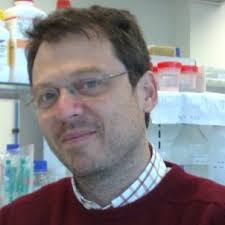Engineering Particles and Capsules With Natural-Based Polymers for Biomedical Applications
Specialized iNANO Lecture by associate professor João Mano, University of Minho, Portugal
Info about event
Time
Location
iNANO audutorium, Gustav Wieds Vej 14, 8000 Aarhus C

Associate professor João Mano, 3B´s Research Group Biomaterials, Biodegradables and Biomimetics, Dept. of Polymer Engineering, University of Minho, PortugalEngineering Particles and Capsules With Natural-Based Polymers for Biomedical ApplicationsThe encapsulation or attachment of cells in spherical matrices has been widely explored in cell and tissue engineering. Distinct strategies have been employed in our research group to prepare hybrid soft systems containing cells, prepared using natural-based polymers. In the first strategy, biomimetic superhydrophobic surfaces have been used by us as a platform to fabricate spherical hydrogel beads in mild conditions. This technology permits to encapsulate living cells and other biological cargo with high efficiency. Examples are shown involving the production of polysaccharide-based beads with different sizes and with hierarchical organization. Such biomaterials encapsulating mesenchymal stem cells may be used as implantable devices to regenerate bone. The developed of biomaterials have been done to optimise the biological performance (using high-throughput analysis) and the mechanical strength of the hydrogels. Examples on such topics are also shown. In another strategy, capsules are fabricated using the so-called layer-by-layer technology, where the consecutive layers are well stabilized by electrostatic interactions or other weak forces. 3D devices may be produced that could be useful in biomedicine, including in tissue engineering or in drug delivery. Using spherical templates containing cells it is possible to produce liquefied capsules that may entrap viable cells. The presence of solid microparticles inside such capsules offers adequate surface area for adherent cell attachment increasing the biological performance of these hierarchical systems, while maintain both permeability and injectability. The compartmentalization of distinct cell types (including mesenchymal stem cells and endothelial cells) may enhance the osteogenic capability of this system that could be useful in bone tissue engineering applications.
| |
| Host: Associate professor Henrik Birkedal, iNANO & Dept. of Chemistry, Aarhus University |
